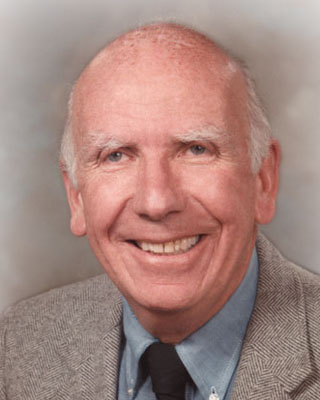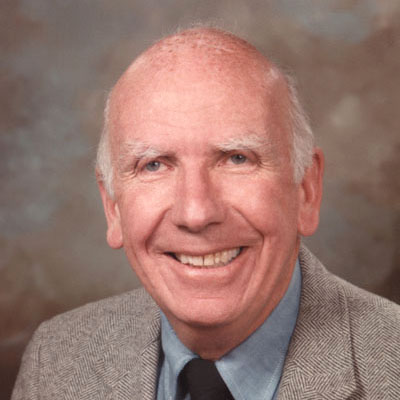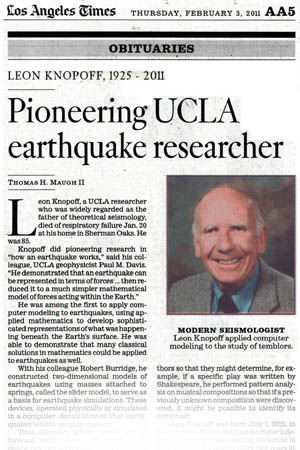UCLA researcher Leon Knopoff was widely seen as the father of theoretical seismology, applying mathematical principles to the study of earthquakes. His work contributed to improved earthquake forecasting.
By Thomas H. Maugh II
Los Angeles Times
Leon Knopoff, a UCLA researcher who was widely regarded as the father of theoretical seismology, died of respiratory failure Jan. 20 at his home in Sherman Oaks. He was 85.
Knopoff did pioneering research in "how an earthquake works," said his colleague, UCLA geophysicist Paul M. Davis. "He demonstrated that an earthquake can be represented in terms of forces . . . then reduced it to a much simpler mathematical model of forces acting within the Earth."
He was among the first to apply computer modeling to earthquakes, using applied mathematics to develop sophisticated representations of what was happening beneath the Earth's surface. He was able to demonstrate that many classical solutions in mathematics could be applied to earthquakes as well.
With his colleague Robert Burridge, he constructed two-dimensional models of earthquakes using masses attached to springs, called the slider model, to serve as a basis for earthquake simulations. These devices, operated physically or simulated in a computer, demonstrated that earthquakes tend to occur in clusters.
That discovery allows researchers to forecast earthquakes with some confidence but not to predict them with certainty. For example, there is about a one in 20 chance that any quake is a foreshock of a large temblor.
Knopoff also found that most small earthquakes on a major fault relieve stress but are not predictors of a subsequent instability, and thus do not help in forecasting future events.
He also gained a certain amount of fame from a 1983 report in the journal Nature with astronomer Steven Kilston that tentatively linked earthquakes to an alignment of the sun and moon on opposite sides of the Earth that tugged the opposite sides of faults in opposing directions. That article predicted a quake in November 1987 in California's Imperial Valley and, in fact, two occurred.
Researchers still do not know what to make of that potential link.
Knopoff was also the co-inventor of thermoluminescence dating, widely used by archaeologists to determine the age of pottery. Heating the crystalline materials releases radiation trapped during the time since the pottery was produced, emitting light whose intensity is directly proportional to the age of the object.
 L E O N K N O P O F F ____________________________________________________________________________________________________________
L E O N K N O P O F F ____________________________________________________________________________________________________________

